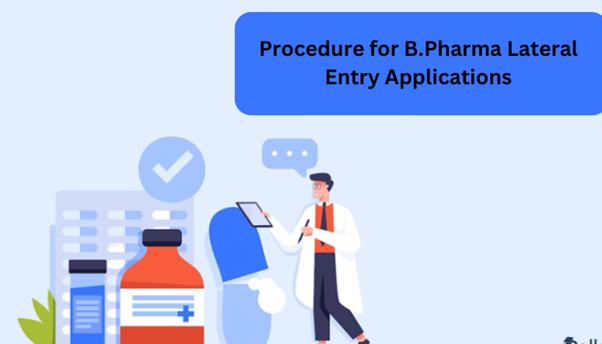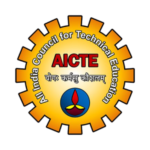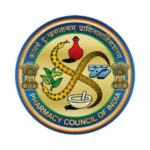The Bachelor of Pharmacy (B.Pharm) is a four-year undergraduate programme that provides students with a thorough understanding of pharmaceuticals, healthcare, and medicinal chemistry. A B.Pharma lateral entry allows people who are already holding a diploma in pharmacy (D.Pharm) to pursue this degree more quickly.
After finishing the Diploma in Pharmacy, students can enrol in a three-year undergraduate programme called B Pharma lateral entry. The B Pharm lateral entry allows a student to seek admission to the B Pharma course in the second year. This manner, you can become a pharmacy graduate in three years of further education.
Understanding B.Pharma Lateral Entry
B.Pharma lateral entry allows diploma holders to directly enter the second year of the B.Pharma programme, reducing their study time from four to three years. This approach saves time while also providing advanced learning possibilities for students who are already familiar with the basic principles of pharmacy. The lateral entry is different from the normal B Pharmacy. Its B Pharmacy entrance process differs significantly from the conventional one. You may find the B Pharma lateral entrance costs on the official website of your preferred B.Pharm college.
This article discusses the qualifying requirements, application process, and key considerations for obtaining B.Pharma admission through lateral entry into top pharmaceutical universities.
Qualifications for B.Pharma Lateral Admission
In order to qualify for lateral entrance into B.Pharma, candidates need to fulfil the following requirements:
Qualifications for Education: Candidates must hold a Diploma in Pharmacy (D.Pharm) from an institution recognised by the Pharmacy Council of India (PCI).
Minimum Grades: Applicants must have completed their diploma programme with at least 50% of the possible points. Higher cut-off percentages may be found at several reputable pharmaceutical universities.
Maximum Age: For lateral entry B.Pharm admission, there is typically no maximum age limit. Candidates should, however, confirm the specific college policies since they may differ.
Procedure for B.Pharma Lateral Entry Applications

There are multiple steps in the application procedure for B.Pharma lateral entry, including documentation, research, and submission. This is a comprehensive how-to:
Step 1: Look up and make a shortlist of pharmacy colleges
Start by looking into pharmaceutical colleges that provide lateral entry B.Pharma programmes. A few things to think about include the infrastructure, placement records, professor qualifications, reputation of the college, and evaluations from former students. List the colleges that best suit your needs and qualifications.
Step 2: Verify Notifications of Admission
To check for admission notifications, go to the official websites of the colleges that made the short list. These notifications are often sent out by institutions in April or June. Take note of each institution’s significant dates and application deadlines.
Step3: Obtain application forms
Typically, application materials are available for download on the college’s official website or can be picked up from the admissions department. Online application portals may also be offered by certain colleges.
Step 4: Fill the Application form
Fill out the application as precisely as carefully as possible. Make sure to include your personal information, educational background, and the necessary contact details. Please affix the required documents.
Mark sheets and certificate for D.Pharm
Transfer certificate from the prior educational establishment
Conduct certification
Passport-sized pictures
Evidence of date of birth (birth certificate or certificate of graduation from school)
Identity verification (passport, Aadhar card, etc.)
Step 5: Application Fee Payment
An application fee is often non-refundable for colleges. Usually, credit/debit cards, demand drafts, and net banking can be used to pay this fee online.
Step 6: Send in your application
Send the completed application to the college’s admissions office with the necessary paperwork and the application fee. Make sure you get a confirmation email or receipt for online submissions.
Step 7: Admission Test (if relevant)
For admittance via lateral entry, several pharma colleges hold entrance exams. If necessary, follow the curriculum the school has provided to ensure you are ready for the admission exam. Pharmaceutics, pharmacognosy, pharmacology, and pharmaceutical chemistry are among the often covered subjects.
Step 8: Attend Counseling Sessions
Colleges that do not conduct entrance exams typically follow a merit-based selection process. Shortlisted candidates are invited for counseling sessions where they can choose their specialization and secure their seats. Bring all original documents for verification during the counseling session.
Suggestion for a successful B.Pharm
Study and prepare as soon as possible. Applying early improves your chances of getting into reputable universities.Stay Up to Date: Observe all changes and announcements from the universities that catch your interest. Your admissions process could be compromised if you skip deadlines or important details.
Document Preparedness: Make sure that every document you have is current and in order. This comprises any necessary documentation, identity documents, and academic credentials.
Exam Preparation: Set aside time to study and become familiar with the format of the exam if there is an entrance exam. For practice, consult study resources and previous exam questions.
Seek Guidance: Consult with academic counselors or professionals who can provide insights and guidance on the admission process and career prospects in pharmacy.
Benefits of B.Pharma Lateral Entry :
Time Efficiency: Finishing the B.Pharma degree in three years as opposed to four enables for an earlier workforce entry or to pursue additional education.
Advanced Learning: Students can expand their knowledge by diving deeper into more complex pharmaceutical issues, building on the fundamental information they learned in their D.Pharm.
Professional Opportunities: Obtaining a B.Pharma degree provides access to a wide range of professional options in academia, research organisations, healthcare, and pharmaceutical firms.
Greater Earning Potential: Compared to individuals who merely hold a pharmacy diploma, graduates holding a B.Pharma degree typically have a greater earning potential.
Job prospects for lateral entry in B Pharm

There is a huge career scope in pharmacy. Following the B-pharm lateral entry course, there are a number of employment options, including:
Drug Safety Associate
Pathological Lab Researchers,
Drug Therapist
Director of Pharmacy
Pharmacy Technician
Research Manager
Pharmacy Manager
In summary
For D.Pharm graduates looking to further their studies and careers in pharmacy, gaining admission to B.Pharm through lateral entry is a great choice. Candidates can be admitted to prestigious pharmaceutical institutions by knowing the requirements, carefully following the application process, and adequately prepared. This strategy not only enhances their educational objectives but also improves their career opportunities in the dynamic pharmaceutical sector.
B Pharm lateral entry is an undergraduate, three-year program offered after completing the Diploma in Pharmacy. The B Pharm lateral entry helps a student gain admission to the B Pharm course in the second year. This way, you can become a pharmacy graduate within three years of further studies.
The lateral entrance route is different from the regular B Pharmacy. Its B Pharmacy admission process is quite different from the regular one. You can check the B Pharm lateral entry fees on the official website of your selected college.
B Pharm lateral entry career opportunities
The career scope of pharmacy is vast. Some of the career opportunities after the B pharm lateral entry course are:
Pharmacy Manager
Drug Safety Associate
Pathological Lab Scientist
Drug Therapist
Director of Pharmacy
Pharmacy Technician
Research Manager












